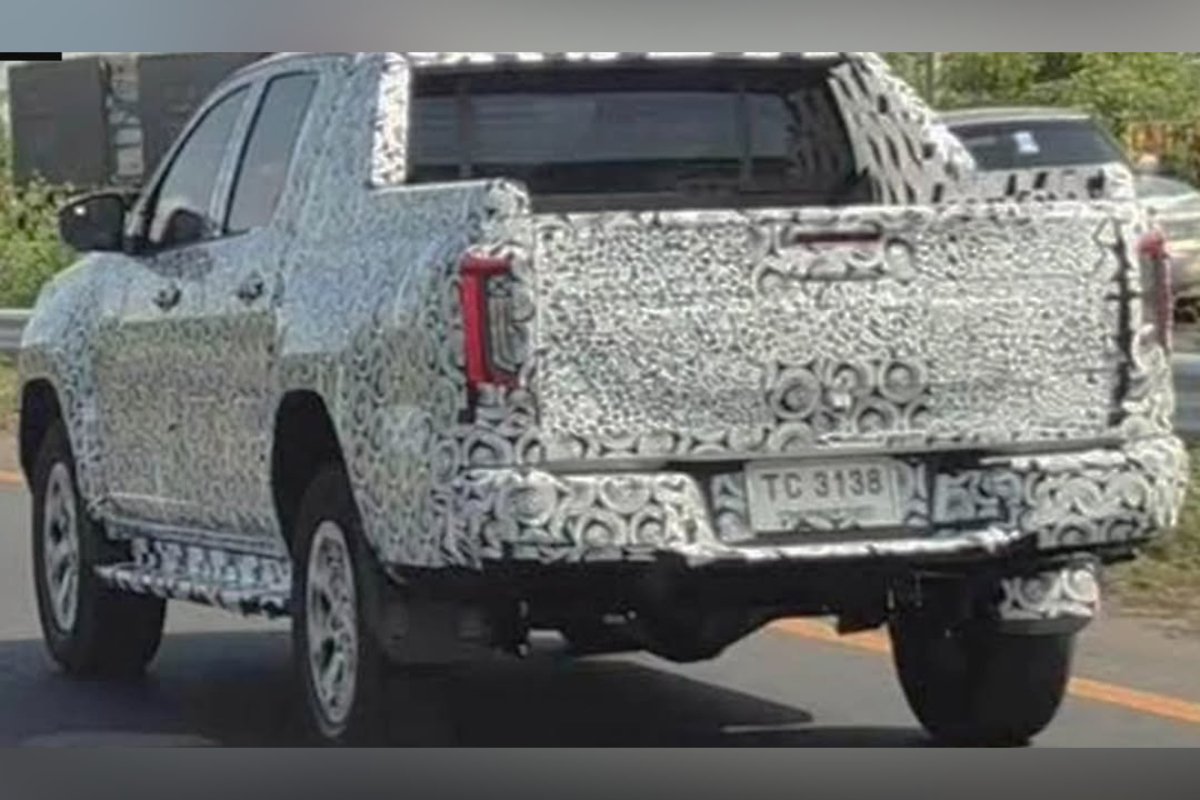Images of the HiLux were snapped in Thailand and uploaded to Instagram by the Kurdistan Automotive Blog, showing an example of the dual-cab with even more camouflage than previous examples spied on the nation’s roads.
It appears the HiLux’s front design will transition to the honeycomb-esque lower grille look we’ve seen on recently updated models, such as the RAV4 and Camry. The upper grille and headlights meanwhile appear to be much slimmer.
At the back, the tail lights look to be more rectangular than the units on the current ute, while raised camouflage on the tailgate suggests the HiLux may get embossed lettering, similar to a handful of its rivals.

However, there is one big talking point to the new HiLux, with its A- to C-pillar section seemingly unchanged from the current models, all but confirming reports it’ll be a heavy facelift rather than based on an entirely new platform.
This isn’t uncommon for Toyota: both the new Camry and RAV4 are significant reskins of their predecessors, which allows the carmaker to cut development and tooling costs.
The IMV ladder-frame chassis under the HiLux dates back to 2004, though it was last given a significant rework in 2015. Previous reports suggested the new HiLux would adopt the circa-2021 TNGA-F platform which underpins the new LandCruiser Prado, though this doesn’t seem to be the case.
While we don’t yet know the new ute’s specifications, it’s expected to not be drastically different to the model it’ll replace, which may leave it vulnerable to being overtaken by more rivals.

Not that Toyota is having that problem with its now 15-year-old HiLux, which is consistently one of Australia’s best-selling vehicles, and for two months this year has been the top-seller.
In January, Headlight Magazine reported the turbo-diesel 1GD 2.8-litre and 2GD 2.4-litre four-cylinder engines will continue to power the new HiLux, though changes could be made to make the ute compliant with Euro 6 regulations.
In Australia, Toyota’s 48-volt ‘V-Active’ mild-hybrid system is only available on certain grades, but could become standard across the range.
The current HiLux is also available with a six-speed automatic transmission, however the Prado – which uses the same 2.8-litre engine – comes with an eight-speed. If this was fitted to the HiLux, it would likely reduce fuel consumption and emissions.












Diskusi tentang posting ini